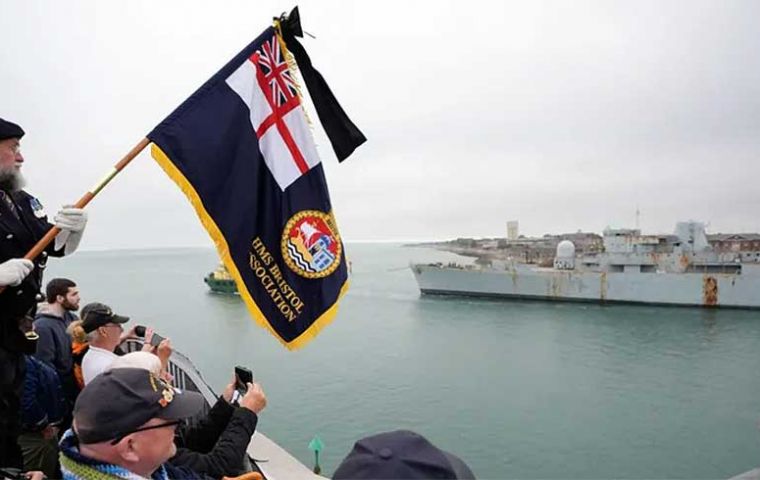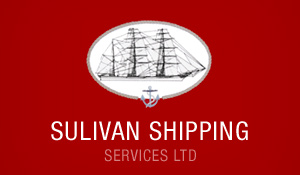MercoPress. South Atlantic News Agency
Final farewell for an Iconic Falklands War destroyer HMS Bristol
 Veterans and members of the public gathered to send-off HMS Bristol (Pic MoD)
Veterans and members of the public gathered to send-off HMS Bristol (Pic MoD) A Royal Navy destroyer that participated in the Falklands War left Portsmouth Harbor on Friday, June 13th, and is travelling to Turkey, where she will be recycled. A small group of spectators came to see HMS Bristol, the only Type 82 ever built of her class, being towed out of Portsmouth Harbor to start her journey to an EU-approved recycling yard in Turkey.
The iconic vessel was first commissioned in March 1973 and was decommissioned five years ago. The public and veterans came together at Portsmouth's Round Tower to see off the ship, that was visibly rust-stained, as she departed the south coast.
“As HMS Bristol embarks on its final voyage to the scrapyard in Turkey, we pause to reflect on its remarkable and unique legacy,” said Chris Howe, of the South Atlantic Medal Association 1982.
“This ship played a vital role in the 1982 Falklands conflict, serving as a headquarters and providing steadfast support to British forces.
”For many veterans, Bristol was more than a vessel – it was a home, a place of camaraderie and a symbol of resilience.
“Its departure marks the end of an era, but its contributions to our history and the memories of those who served aboard will endure.
”We honour all who sailed in her and bid HMS Bristol a respectful farewell.”
The vessel was sold for recycling by ship recycling experts, the Defense Recycling & Disposals Team (DRDT), which specializes in the responsible disposal of vehicles, vessels and equipment no longer needed by the Armed Forces.
“Recycling of ships at the end of their hull life is routine business for the Royal Navy,” said DRDT boss Alistair Hughes.
“Our aim is to achieve maximum value for money for defense in an environmentally compliant manner – HMS Bristol is a fitting example of this after her many dedicated years of service.”
The one-off Bristol began to be built in 1967, and her first role was to analyze new computer and weapons systems in the 1970s, according to The News. She was designed to defend a class of aircraft carriers which was never built.
But during the Falklands War in 1982 she led a group of two destroyers, five frigates and an RFA supply ship that arrived as reinforcements.
Then, the ship came into the carrier battle task group to fulfil her role as an air-defense destroyer in light of the sinking of HMS Coventry and went on to be the flagship.
In 1993, she was turned into a harbor training ship on Whale Island to train the next generation of sailors.
Personnel have used the ship for many different training exercises, including engineering technicians training in machinery spaces, and military training personnel conducting armed searches and medical assistants running through casualty evacuations.
She also accommodated several youth organizations, including the Sea Cadets, the Combined Cadet Force and the Sea Scouts.




Top Comments
Disclaimer & comment rulesCommenting for this story is now closed.
If you have a Facebook account, become a fan and comment on our Facebook Page!